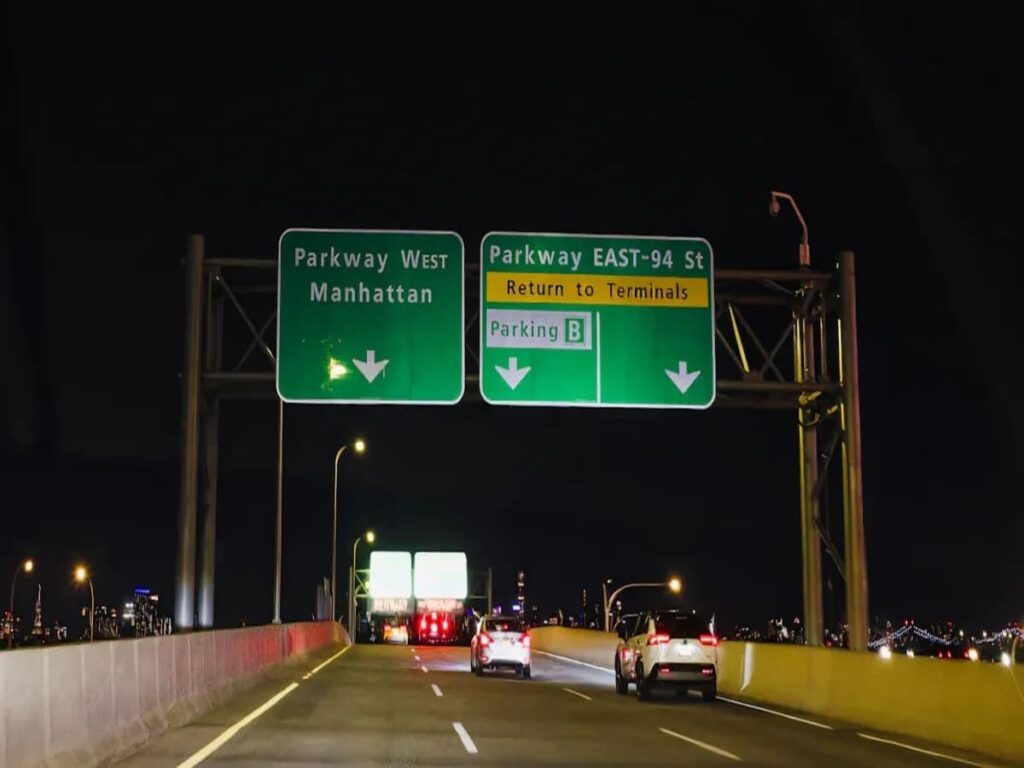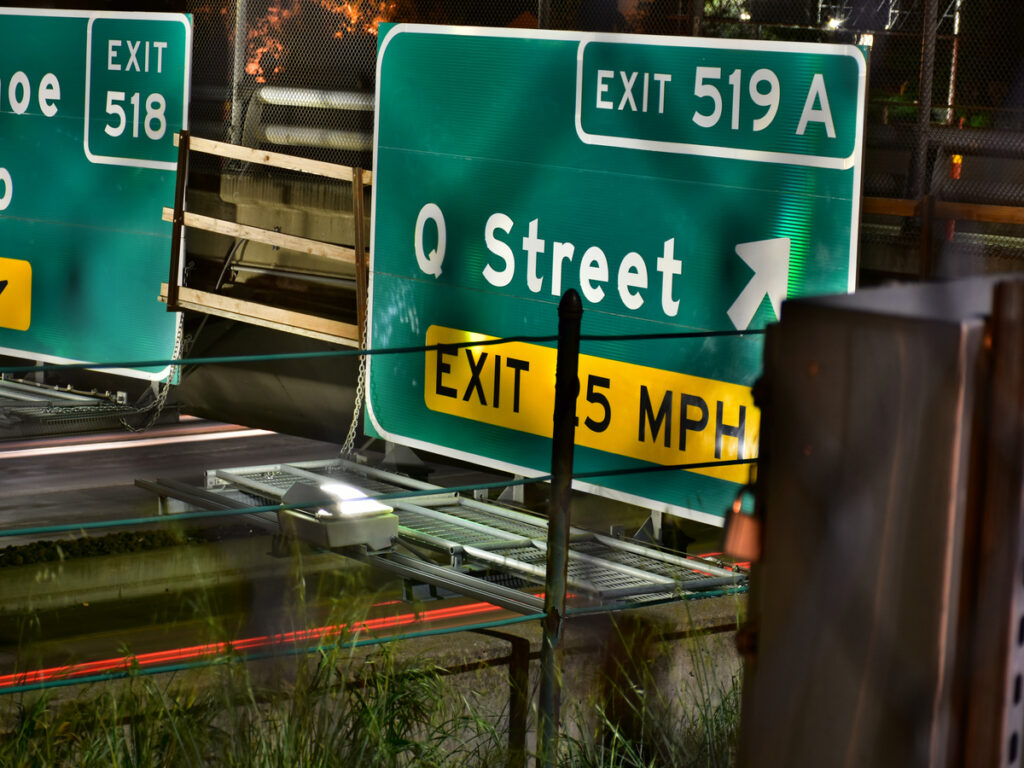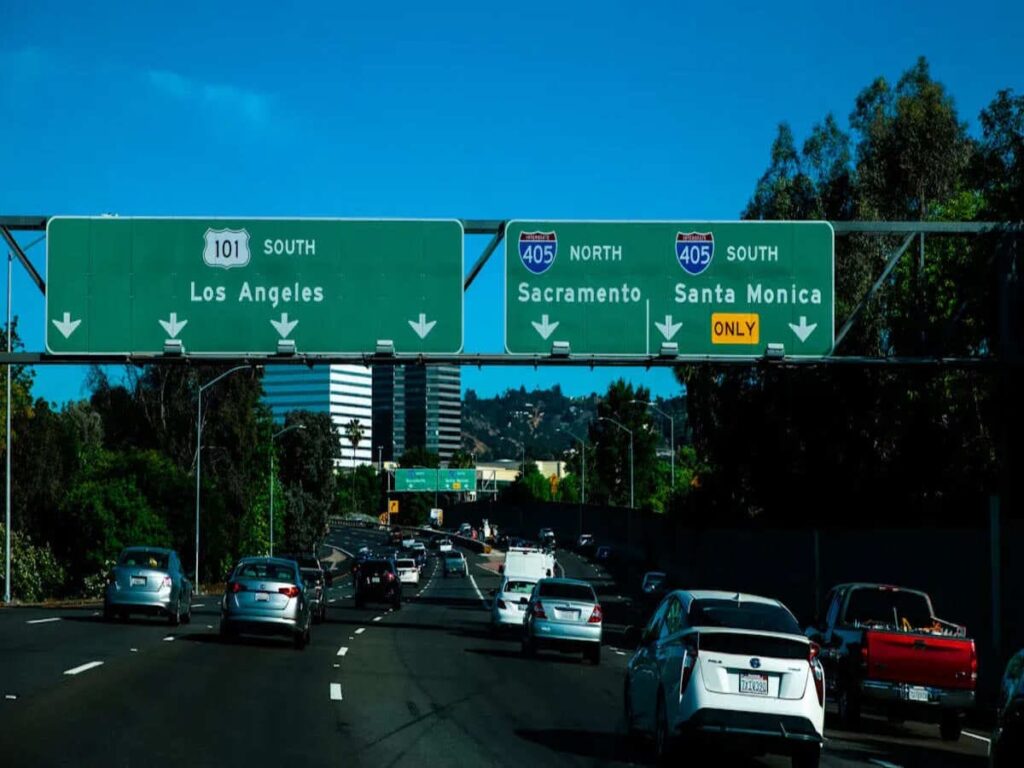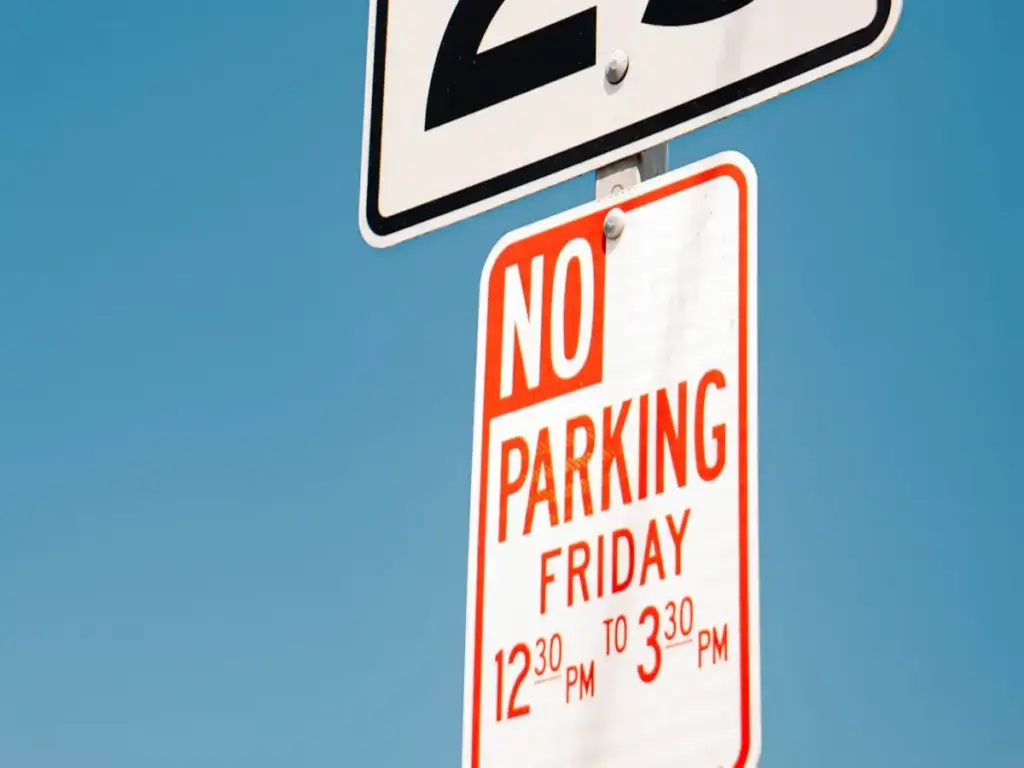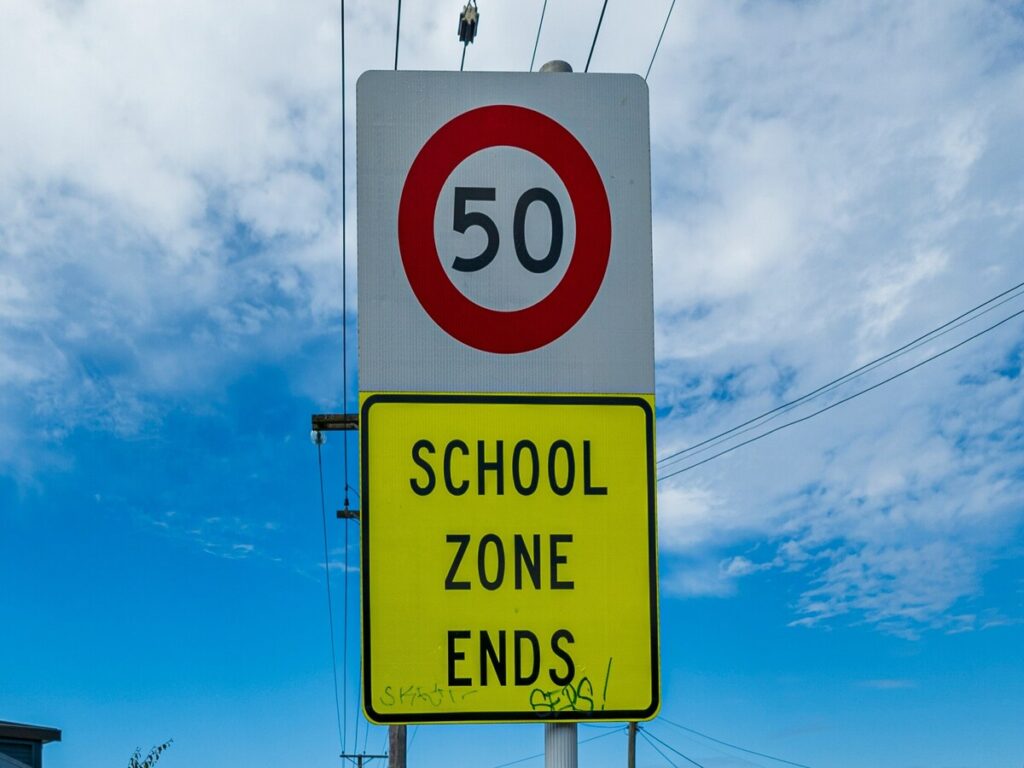
En Australia, El signo de límite de velocidad es más que un indicador de carretera; Es un signo regulatorio legalmente exigible que influye en la seguridad vial, Comportamiento del conductor, y cumplimiento de la infraestructura. Cada signo debe tener el tamaño correcto, posición, y construido en línea con las especificaciones aprobadas por el gobierno para cumplir con los estándares nacionales de tráfico.
Contratistas de carretera, ingenieros, y los fabricantes de signos deben comprender las dimensiones correctas para garantizar que su señalización cumpla con los requisitos de visibilidad y legibilidad en diferentes zonas de velocidad. Para exportadores, La precisión de estos tamaños es igualmente importante: la documentación de los problemas, controles regulatorios, y el cumplimiento del uso final, todos dependen de hacerlo bien.
Fabricación de Optrraffic Señales de límite de velocidad en venta que cumplen con los estándares australianos, incluido como 1742 y como/nzs 1906.1. Si para los consejos locales, carreteras privadas, o proyectos internacionales, nos aseguramos de que cada signo esté construido a las dimensiones correctas, clase reflectante, y estándares de durabilidad: los clientes que se mantienen cumplidos y las carreteras se mantienen seguras.
Antecedentes regulatorios: como 1742.2 y su importancia
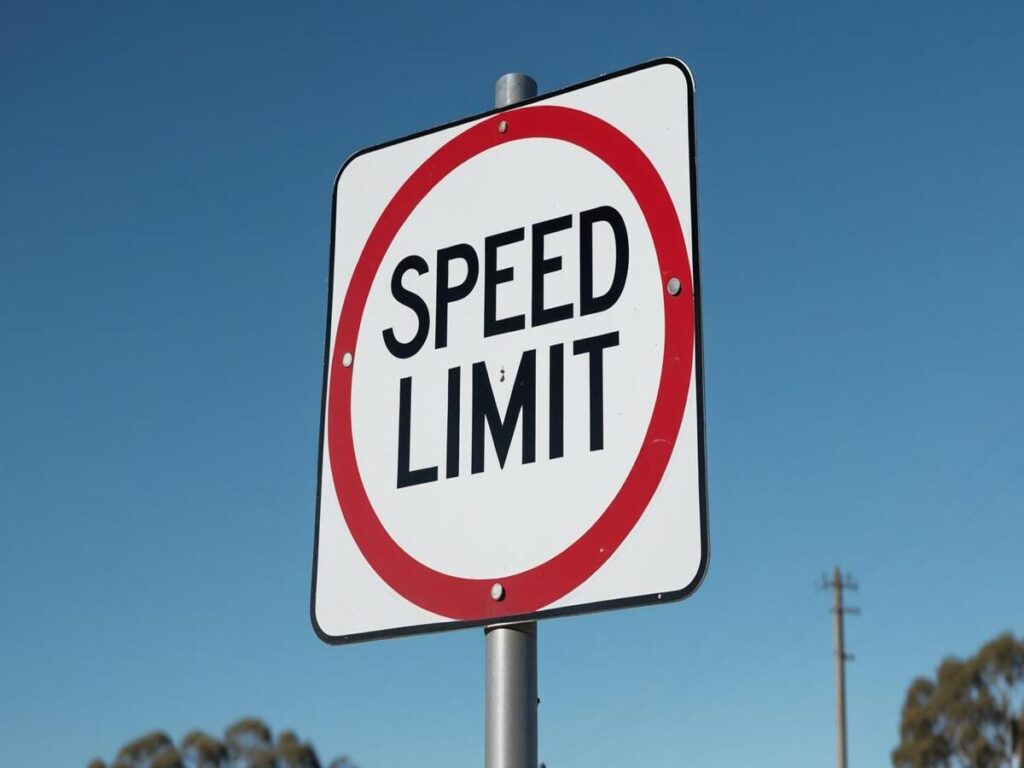
Que es 1742.2?
COMO 1742.2 es el estándar australiano que rige los dispositivos de control de tráfico, Signos regulatorios específicos como señales de límite de velocidad. Describe los tamaños aceptables, fuentes, diseños, clases de reflectividad, y principios de instalación para señales utilizadas en todas las carreteras públicas en todo el país.
El documento define un enlace claro entre la velocidad del vehículo, tamaño de signo, y la distancia de visibilidad requerida. Por ejemplo, Un letrero publicado en un 100 La zona de km/h debe ser más grande que una en un 40 zona km/h, A medida que los conductores necesitan más tiempo y distancia para reconocer y reaccionar a velocidades más altas.. También prescribe estilos de fuente aceptables (referenciando como 1744) y materiales reflectantes, Garantizar la consistencia y la ejecución en todo el país.
Consecuencias legales del incumplimiento
No cumplir con AS 1742.2 Los estándares pueden conducir a serias implicaciones. Los consejos locales o las agencias estatales pueden rechazar una señalización no conformada, reemplazos de demanda, o retener el pago de los contratos de infraestructura. En los peores escenarios, La señalización incorrecta podría invalidar la aplicación del tráfico o conducir a accidentes debido a la mala visibilidad o la mala interpretación.
Para fabricantes y exportadores, Esto significa prestar mucha atención a las especificaciones de adquisición a nivel estatal y los requisitos de documentación. Incluso cuando un letrero parece funcional, Si no cumple con las especificaciones técnicas de AS 1742.2, se puede considerar inadecuado para la instalación.
Tamaños de signo de límite de velocidad recomendado bajo AS 1742.2
Gráfico de tamaño típico para diferentes zonas de velocidad
COMO 1742.2 Recomienda los diámetros de signo de límite de velocidad circular estándar basados en la velocidad y el contexto de la carretera designados. Los tamaños más comunes son:
| Zona de velocidad (km/h) | Carreteras urbanas | Carreteras rurales | Carreteras & Autopistas |
|---|---|---|---|
| 40 - 60 | 600 milímetros | 750 milímetros | 900 milímetros |
| 80 - 100 | 750 milímetros | 900 milímetros | 1200 milímetros |
| 110+ | 900 milímetros | 1200 milímetros | 1500 milímetros (opcional) |
Las carreteras urbanas con límites de velocidad más bajos usan típicamente 600 Señales de MM para una huella mínima y una legibilidad adecuada. En las zonas rurales, Las distancias de visibilidad son más largas, y aceleras más altas, requerido 750 mm o signos más grandes. Las autopistas y las carreteras exigen los tamaños más grandes para permitir que los conductores viajen a 100 km/h o más para identificar y reaccionar a la señalización en el tiempo.
Por qué el tamaño varía según el tipo de carretera
El diseño del entorno circundante afecta la forma en que un conductor percibe la señalización. En áreas urbanas ocupadas, La línea de visión puede estar oscurecida por los edificios, árboles, o vehículos estacionados, Entonces, mientras que las velocidades son bajas, Los letreros deben colocarse claramente dentro de la vista directa de un conductor.
Por otro lado, Los entornos rurales y de carreteras tienen espacios abiertos y mayores velocidades, Entonces, los signos deben ser mayores para mantener la visibilidad a distancias mayores. Esto asegura que los conductores tengan el tiempo adecuado para reconocer el signo, Procesar el límite de velocidad, y ajustar su comportamiento en consecuencia. El tamaño adecuado mejora tanto la seguridad como la aplicación.
¿Todos los estados siguen las mismas reglas de tamaño del signo de límite de velocidad??
NSW: Ejecución estricta de los estándares AS
En Nueva Gales del Sur, cumplimiento de 1742.2 se aplica estrictamente. Transporte para NSW y su agencia, Carreteras y servicios marítimos (Rms), requieren todos los signos para que coincidan el tamaño y los estándares reflectantes sin excepciones. El incumplimiento de los resultados en el rechazo, especialmente en carreteras y carreteras administradas por el estado.
Se espera que los contratistas se adhieran no solo a las dimensiones sino también a la altura de montaje, tamaño de publicación, y espacio libre de borde. A 900 El signo mm que cumple con los estándares reflectantes pero se coloca demasiado bajo o en ángulo incorrecto aún se puede marcar como no conformes.
Vic: Adaptación local y flexibilidad
Victoria también se basa como 1742.2 Como su guía fundamental, Pero los consejos locales pueden implementar ajustes dependiendo de la geometría de la calle o las condiciones de patrimonio. Se pueden aprobar letreros más pequeños en los carriles, calles residenciales, o zonas peatonales, Donde el espacio es ajustado o el impacto visual debe minimizarse.
Dicho esto, Incluso estas variaciones deben ser aprobadas previamente, y los signos aún necesitan ajustarse a los estándares de visibilidad y legibilidad del núcleo. Comunicación entre los consejos locales, equipos de ingeniería, y los proveedores son clave para garantizar una instalación exitosa.
QLD: Enfoque híbrido con suplemento MutCD
El Departamento de Transporte y las Carreteras principales de Queensland se aplica como 1742.2 junto con la suya Manual de dispositivos de control de tráfico uniformes (Muescato), que incluye instrucciones complementarias. Por ejemplo, Las carreteras en áreas remotas o mineras pueden usar señales más grandes o más duraderas debido a condiciones extremas o preocupaciones de visibilidad.
Los contratistas deben asegurarse de que consulten ambos documentos durante las etapas de diseño y adquisición. Este enfoque híbrido refleja la amplia gama de entornos de conducción de Queensland, Desde las carreteras de la ciudad de Brisbane hasta las carreteras del interior.
Cómo los contratistas eligen el tamaño correcto de la señal del límite de velocidad
Interpretando planes de diseño de carreteras
Los contratistas de la carretera generalmente reciben dibujos de ingeniería o planes de diseño civil que incluyen símbolos de ubicación de signo, Códigos de firma, y una referencia al entorno de velocidad. Cada signo está codificado (P.EJ., R4-1-60) con un tamaño correspondiente anotado en un horario de señalización.
El horario proporciona claridad sobre si el camino está clasificado como local, arterial, o autopista, y cuáles deberían ser los tamaños de signo mínimo y máximo. También puede enumerar los parámetros secundarios, como la altura de la publicación o la clase reflectante. Los contratistas deben referirse cruzados con estas especificaciones como 1742.2 Para validar la selección.
Considerando el entorno de visibilidad e instalación
Los contratistas deben considerar más que la velocidad de la carretera. Radios curva, Cambios de elevación, follaje, y las obstrucciones de la carretera influyen en cuán grande y dónde se debe colocar el letrero. En áreas con curvas o puntos ciegos, Los contratistas pueden seleccionar el siguiente tamaño hasta maximizar la visibilidad.
La altura de la instalación también es importante. Las señales que son demasiado bajas pueden ser oscurecidas por los vehículos, mientras que los letreros montados demasiado altos pueden perderse por completo, Especialmente en las zonas urbanas. COMO 1742.2 recomienda alturas de instalación entre 1500 mm y 2100 mm desde el nivel del suelo hasta la parte inferior del signo.
Consideraciones de ingeniería y costos
Mientras que los signos más grandes ofrecen una mejor visibilidad, También requieren estructuras de soporte más fuertes, Aumento de los costos materiales y laborales. Los postes deben soportar cargas de viento, Especialmente en regiones propensas a ciclones o elevadas. Las señales más grandes también ocupan más espacio, Requerir una colocación cuidadosa para evitar interferir con entradas de entradas o pasillos peatonales.
Equilibrar el costo y el cumplimiento es clave. Los letreros de gran tamaño pueden aprobar la inspección, pero conducir a la intergingencia y un presupuesto desperdiciado. Letreros de menor tamaño, sin embargo, RECHISO DE RIESSO Y RELOAR. La estrategia óptima es usar los tamaños estándar como línea de base y aumentar solo cuando se justifica las condiciones específicas del sitio.
Consideraciones de envasado y dimensionamiento de exportación

Anidación y paletización para la eficiencia
Cuando se fabrican letreros para la exportación, Los métodos de apilamiento eficientes pueden reducir significativamente los costos de flete. Anidando letreros más pequeños dentro de los demás (P.EJ., lotes de 10 o 20) ayuda a ahorrar espacio y protege delicadas superficies reflectantes. Revestimiento suave, sábanas de espuma, o los separadores de plástico se colocan entre letreros para evitar rascarse la superficie.
Los letreros generalmente se cargan en paletas de madera o metal y envueltos para evitar el movimiento durante el transporte.. La paletización adecuada garantiza la compatibilidad con los montacargas y los sistemas de envío contenedores. Los exportadores deben apuntar a optimizar las dimensiones verticales y horizontales de las unidades apiladas.
Ajuste de contenedores y solicitudes de tamaño global
Un contenedor estándar de 40 pies puede acomodar varios cientos de señales de límite de velocidad si se empaqueta de manera eficiente. Sin embargo, letreros 1200 mm o mayor reduce el número que puede encajar debido a las limitaciones de ancho. Es posible que los exportadores necesiten ofrecer variantes regionales (P.EJ., 800 mm o 1000 milímetros) Basado en los códigos de carretera del país importador.
Algunos clientes, particularmente en las islas del Pacífico o el sudeste asiático, Solicitar tamaños modificados para que coincidan con las regulaciones locales. Es esencial aclarar si los signos deben coincidir con los estándares australianos o ser fabricados a medida para las pautas en el extranjero.
Consejos de etiquetado y documentación
Qué incluir en la etiqueta
Cada signo debe tener una duradera, etiqueta resistente a la intemperie en el reverso. Las etiquetas generalmente incluyen el nombre del producto, tamaño, clase de láminas reflectantes, fecha de producción, número de lotes, e identificación del fabricante. Agregar un código QR vinculado a un certificado de cumplimiento digital también puede ayudar a acelerar la autorización aduanera.
Documentos de exportación requeridos
Exportar signos regulatorios requiere más que solo facturas. Un paquete de documento estándar incluye un certificado de cumplimiento de AS 1742.2, Certificados de material reflexivo (de 3METRO, Avery Dennison, etc.), Códigos HS, Lista de embalaje, y posiblemente una declaración de país de origen. Algunos países también pueden solicitar hojas de datos de seguridad de materiales. (MSDS).
Los exportadores deben organizar este papeleo por adelantado y respaldarlo digitalmente para garantizar un acceso rápido durante la inspección de aduanas o consultas del cliente.
Errores comunes para evitar
Fuentes de menor tamaño o no conformes
Uno de los problemas más comunes es el uso de fuentes que no cumplen con AS 1744. Incluso si el diámetro del signo es correcto, Si la altura del número, ancho de accidente cerebrovascular, o el espacio es incorrecto, puede fallar la inspección. COMO 1744 proporciona especificaciones claras para las letras de la serie B y C que deben seguirse estrictamente.
Usando la clase reflexiva incorrecta
Muchos nuevos exportadores usan por error Clase 2 láminas reflectantes Para señales destinadas a carreteras de alta velocidad. Esto puede causar problemas de visibilidad por la noche o durante las condiciones climáticas adversas. Clase 1 es obligatorio para todas las señales regulatorias en las carreteras anteriores 80 km/h, según 1906.
Prácticas de instalación incorrectas
Señales colocadas en ángulos incorrectos, altura, o distancias desde el borde del camino a menudo crean problemas de legibilidad. Incluso un letrero de tamaño adecuado y cumplido puede volverse ineficaz si se instala demasiado bajo detrás de una barandilla o demasiado alto por encima del nivel del ojo del conductor.
Estudios de caso: Lecciones de proyectos del mundo real
Falla de cumplimiento de NSW
Un contratista presentó 750 Signos de mm con clase 2 reflectividad para un proyecto regional de NSW donde el requisito especificado era clase 1. Las señales tuvieron que ser eliminadas y reeditadas en dos semanas., Costar al proveedor sobre AUD 10,000 en reelaboración y flete.
Violación de la fuente del vic
En Victoria, un gobierno local rechazado por 200 Signos que usaron una versión ligeramente más estrecha de la fuente de la Serie C. Aunque no es visible de inmediato, La discrepancia fue marcada durante una auditoría final. El proveedor estuvo en la lista negra de futuras licitaciones durante un año.
Conclusión: Lograr el cumplimiento y la confianza
Las señales de límite de velocidad son una visibilidad de alta, Categoría de productos de alta cuenta. Precisión en tamaño, reflectividad, fuente, y los estándares de instalación son fundamentales no solo para el cumplimiento legal sino también para la seguridad de los usuarios de la carretera. Regulaciones de señalización de carreteras australianas como como 1742.2 y como 1744 existir por buena razón, y dominarlos te ayuda a ofrecer consistente, productos confiables.
Para contratistas, fabricantes, y exportadores por igual, Una comprensión estratégica de las regulaciones de dimensionamiento permite una mejor cotización, Menos retrasos de instalación, y mayor satisfacción del cliente. Tomar atajos sobre dimensiones o materiales puede conducir a contratos perdidos, multas, y daño de reputación.
En este sector competitivo y regulado, La mejor manera de destacar es a través de la precisión., cumplimiento, y un compromiso inquebrantable con la calidad. Esto es especialmente cierto cuando se trata de señalización, donde cada milímetro importa. Comprender y aplicar las dimensiones correctas no solo garantiza el cumplimiento legal, sino que también maximiza la visibilidad y la seguridad en las carreteras australianas. Aprenda más en nuestro blog: Estándares de tamaño de signo de tráfico en Australia: Una guía completa

